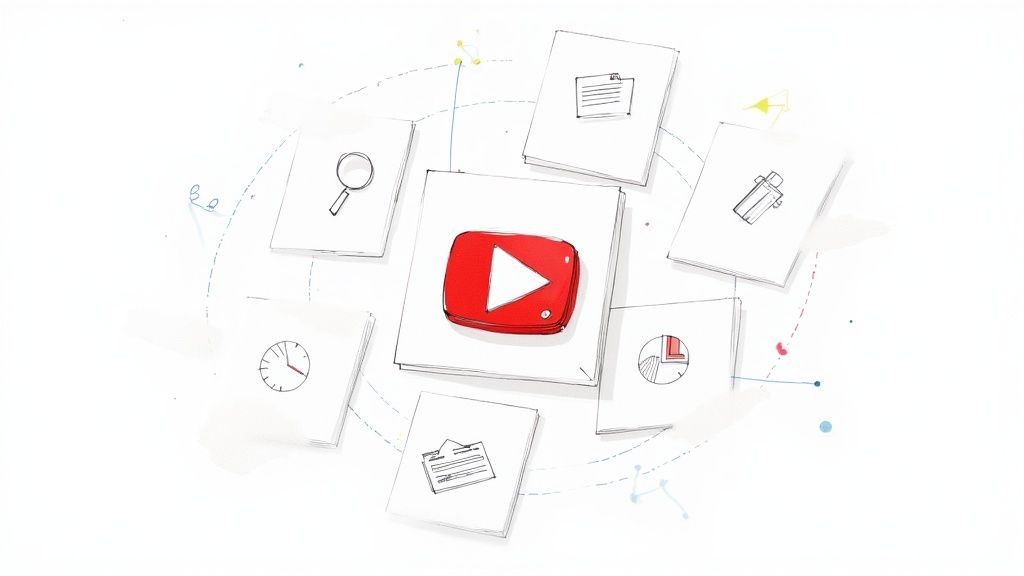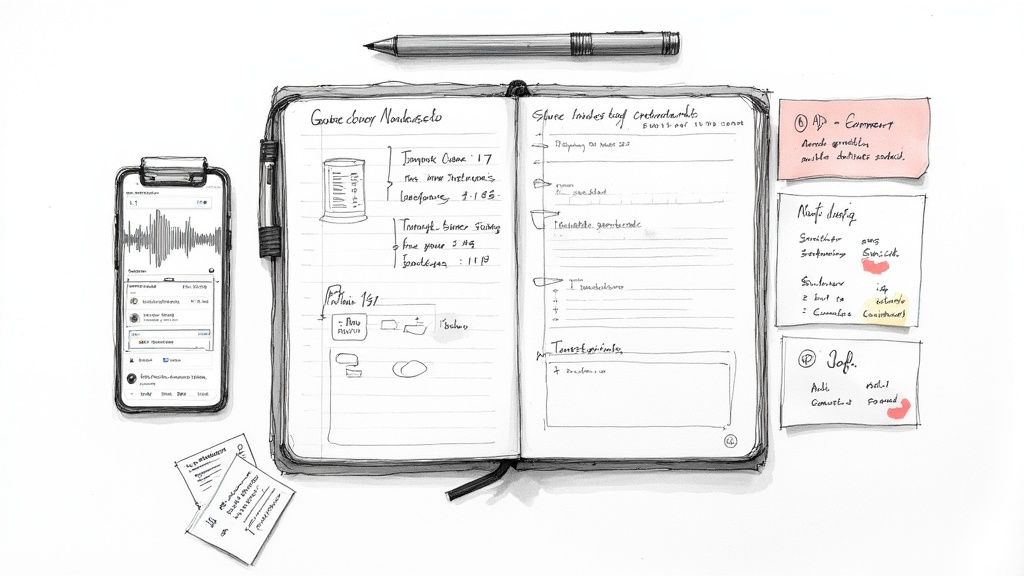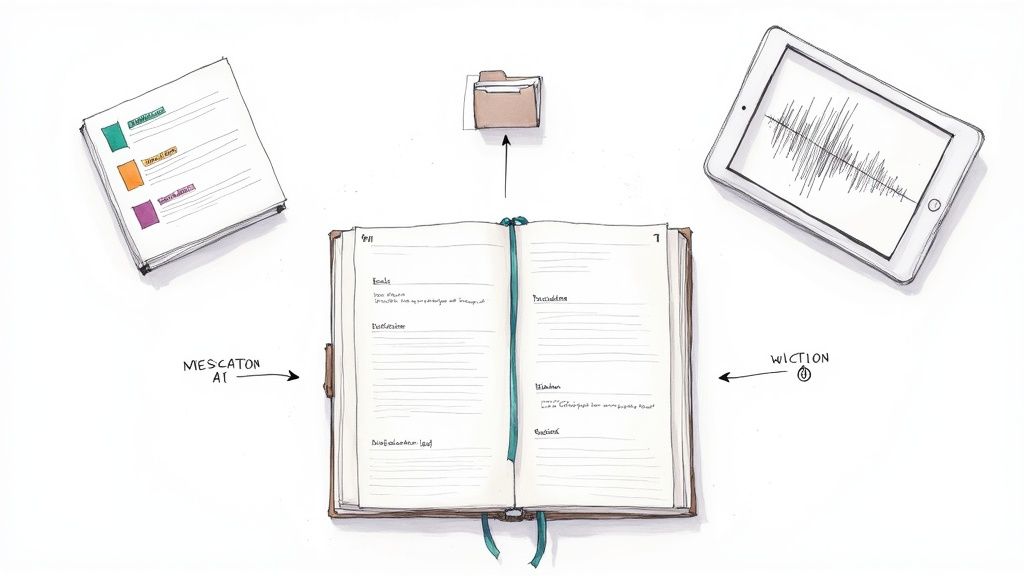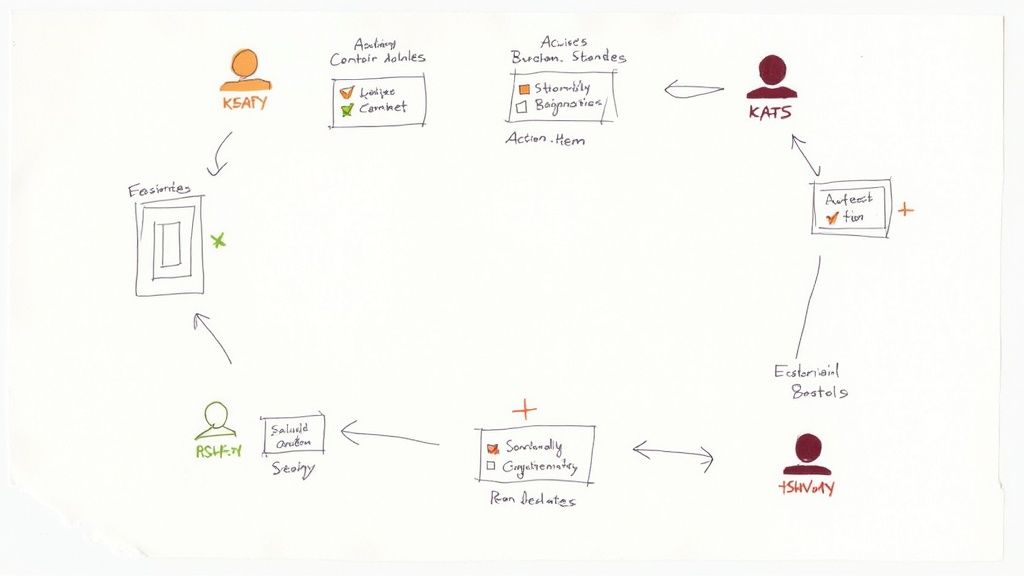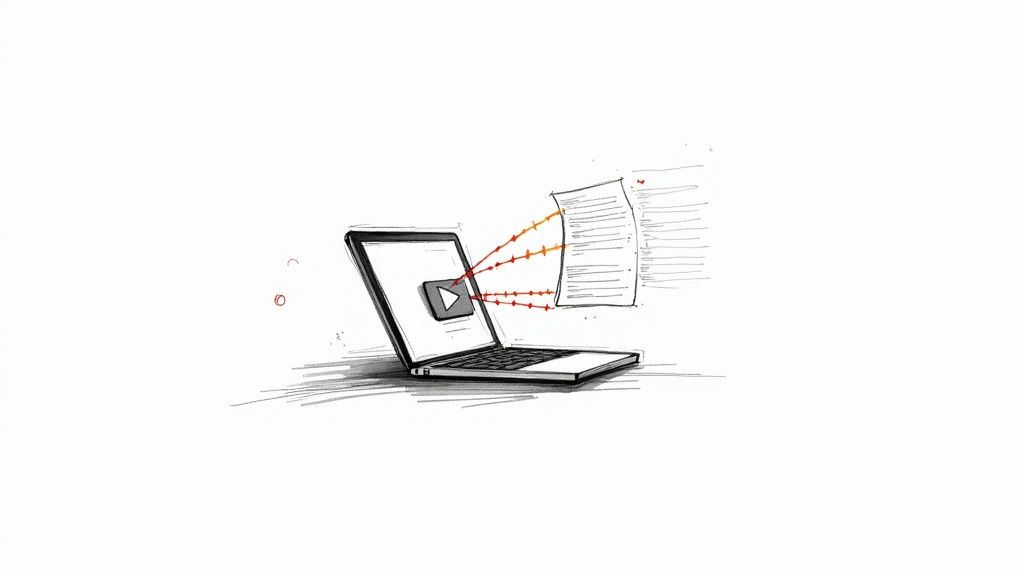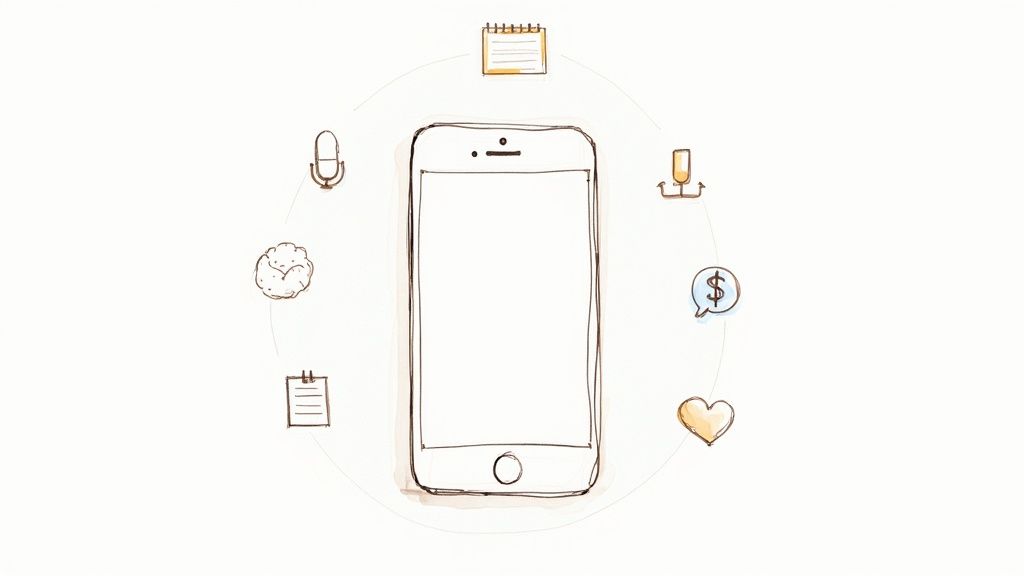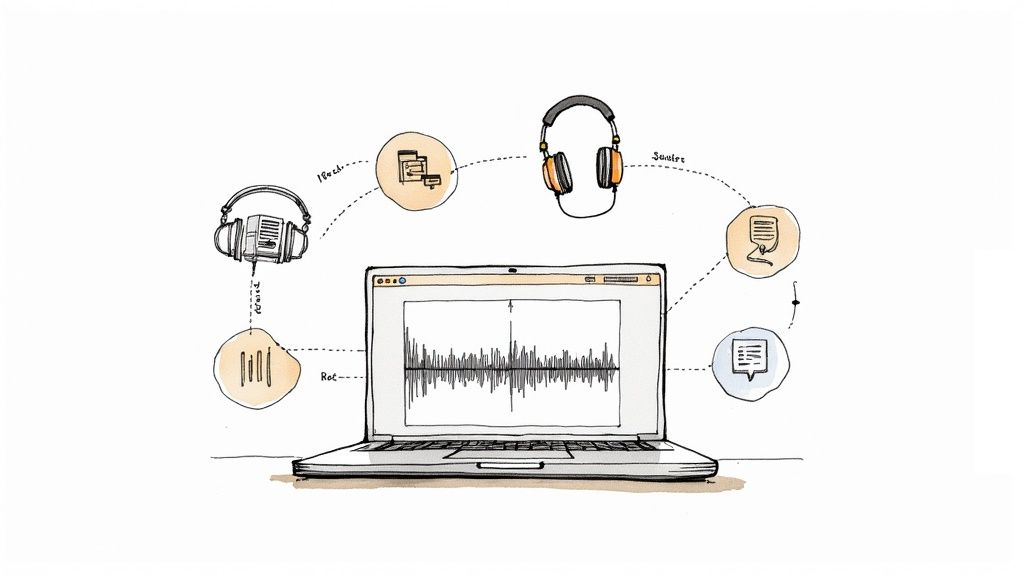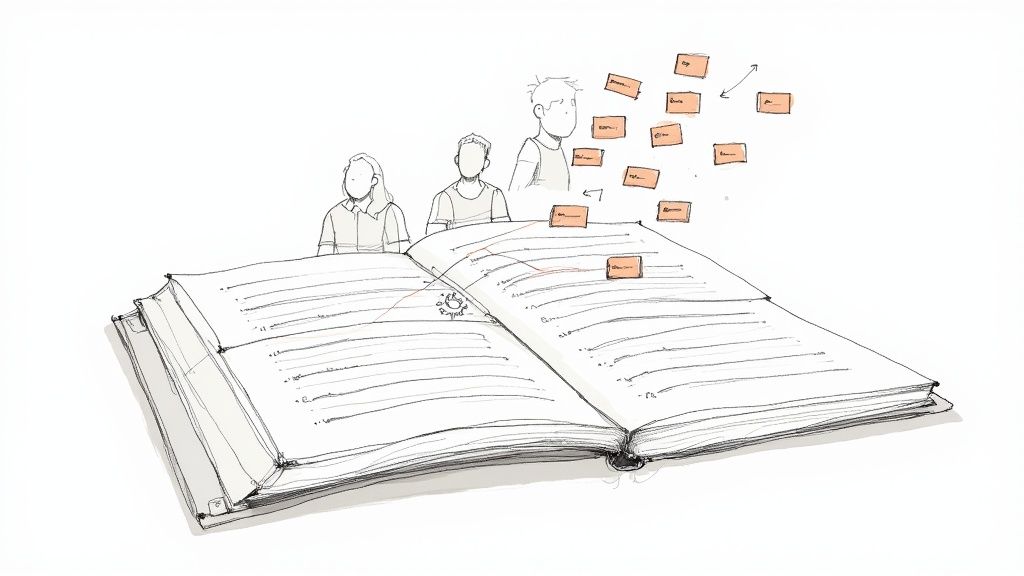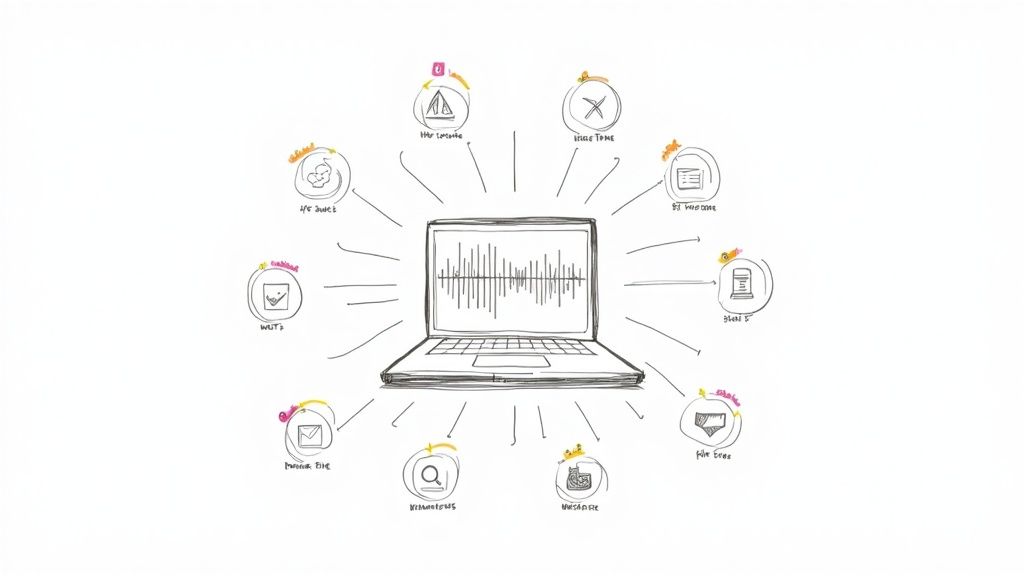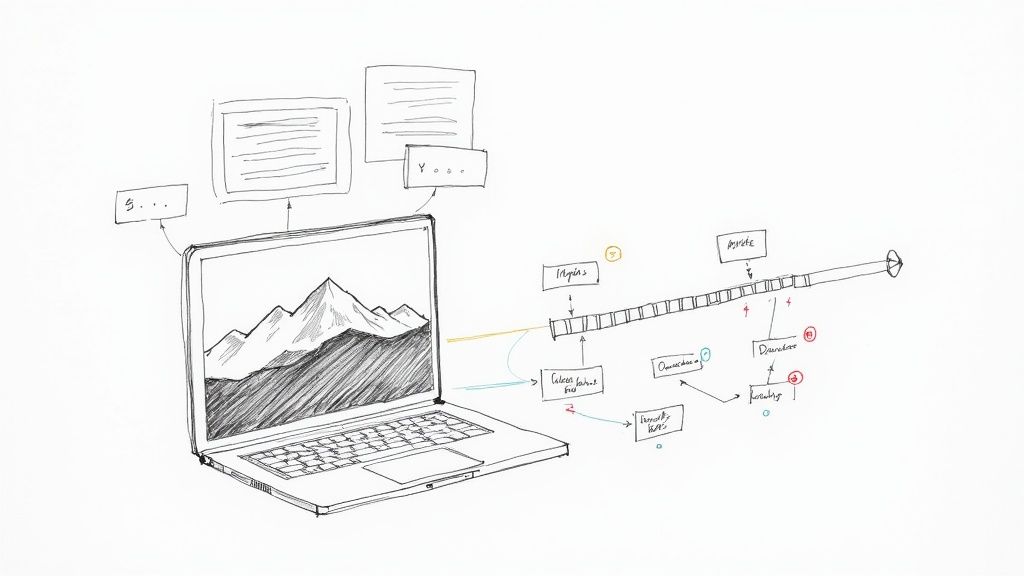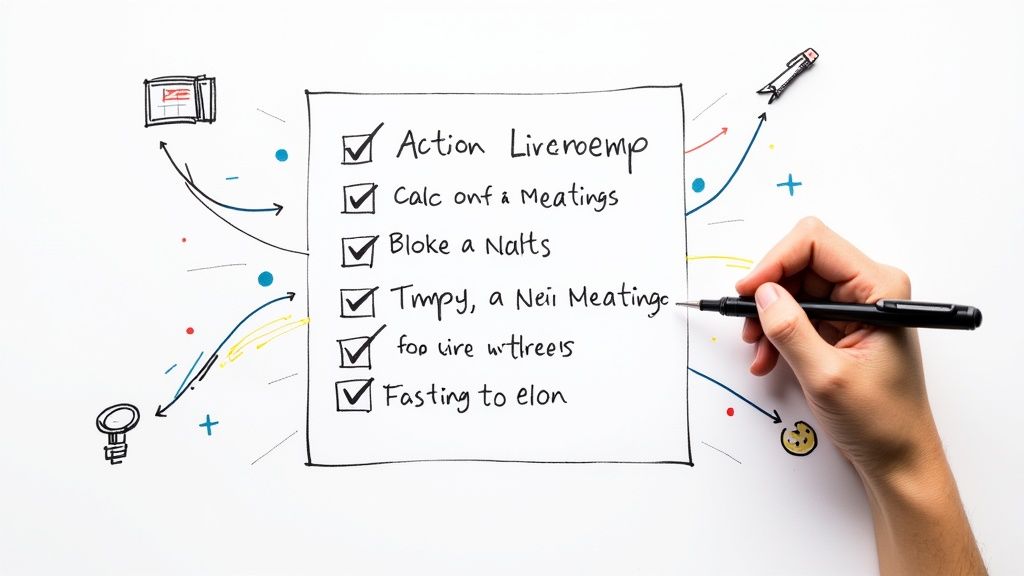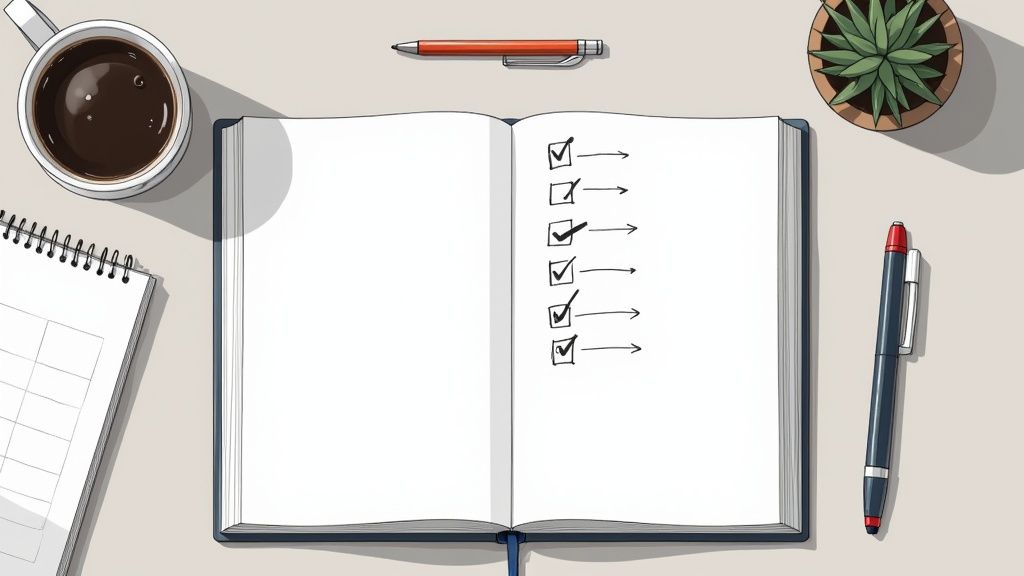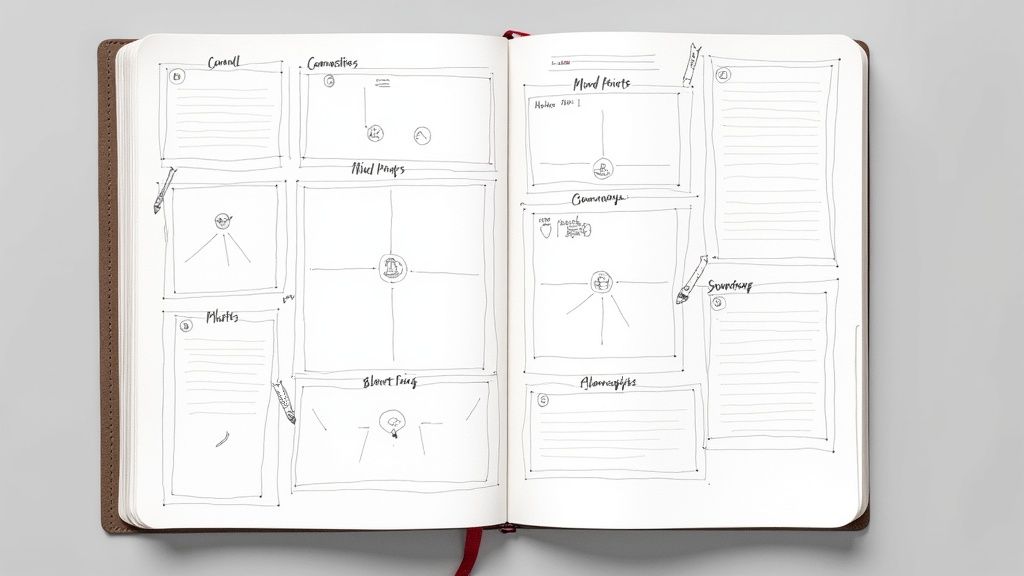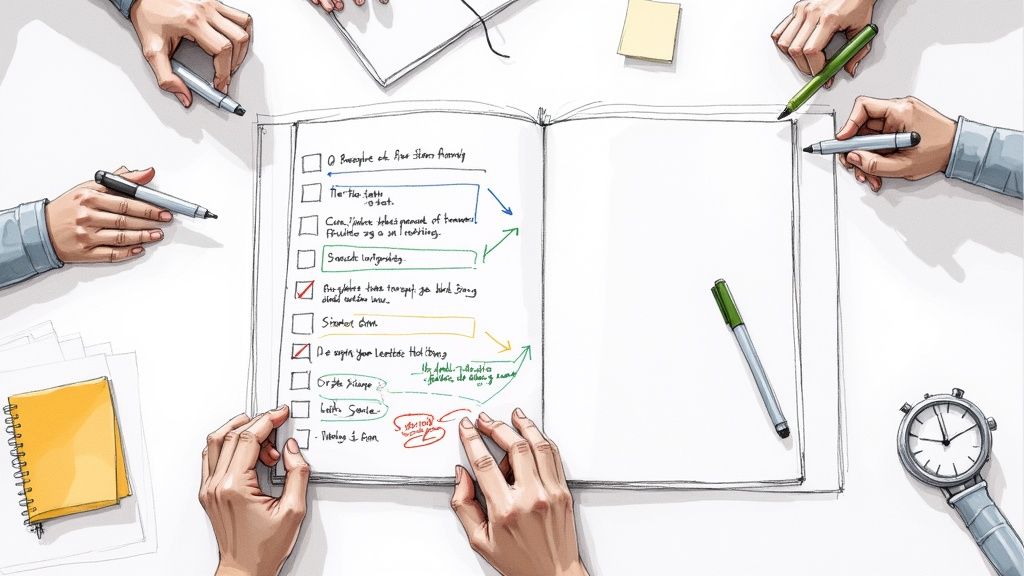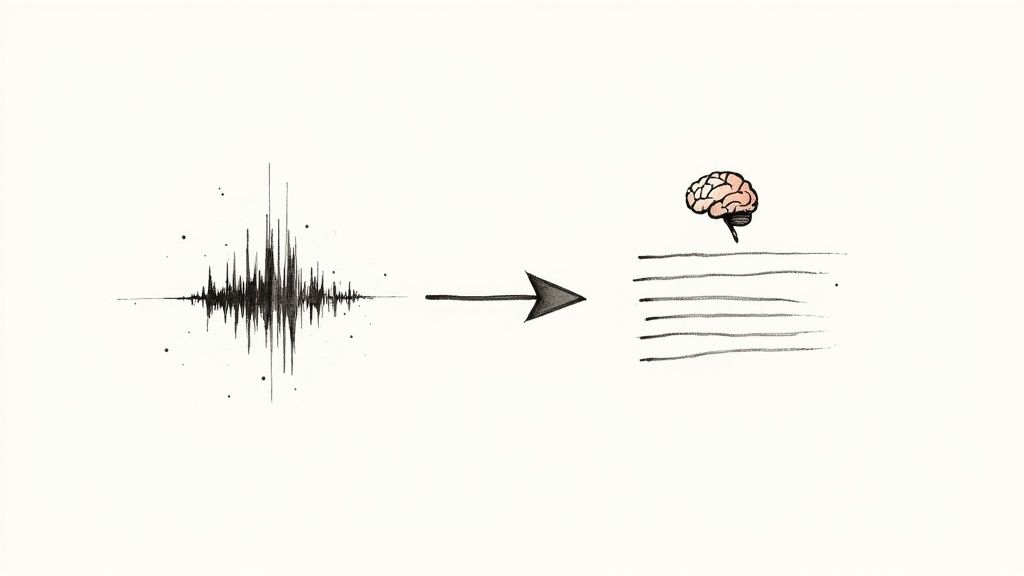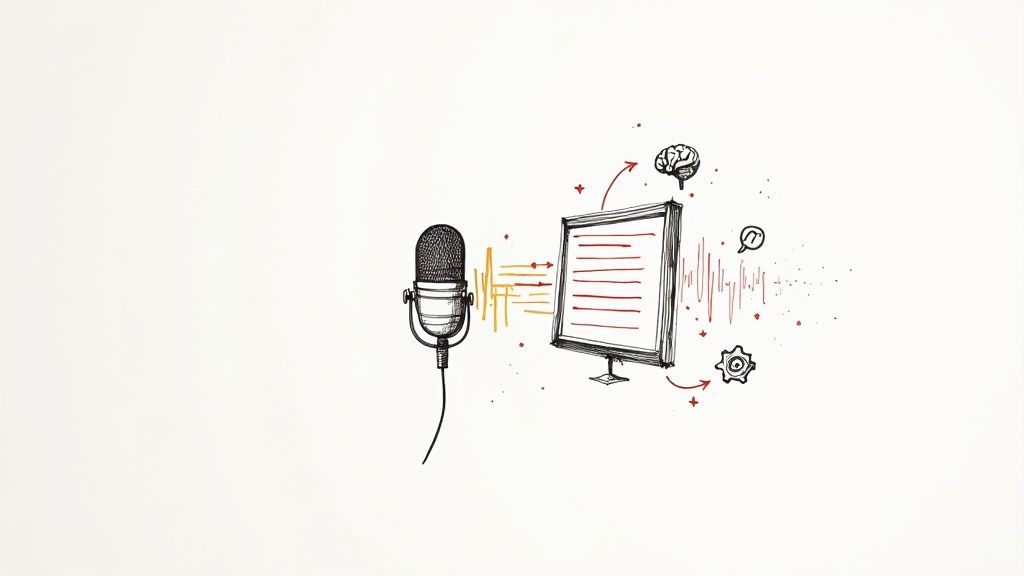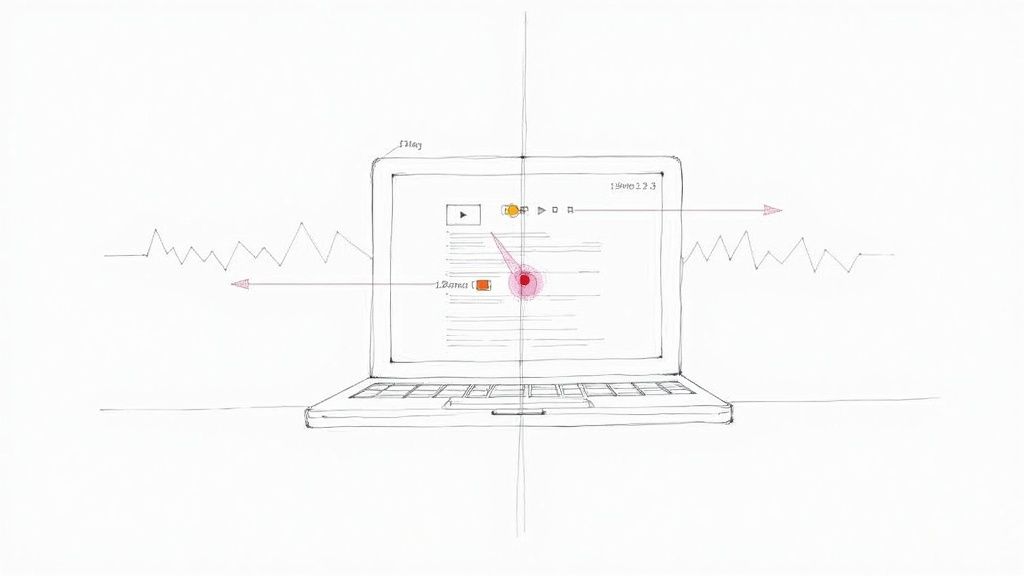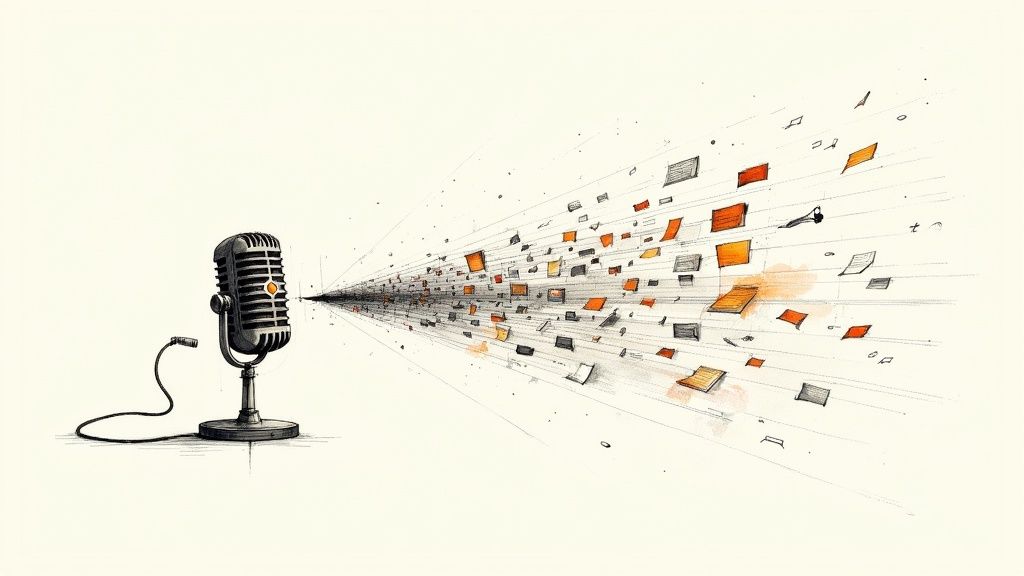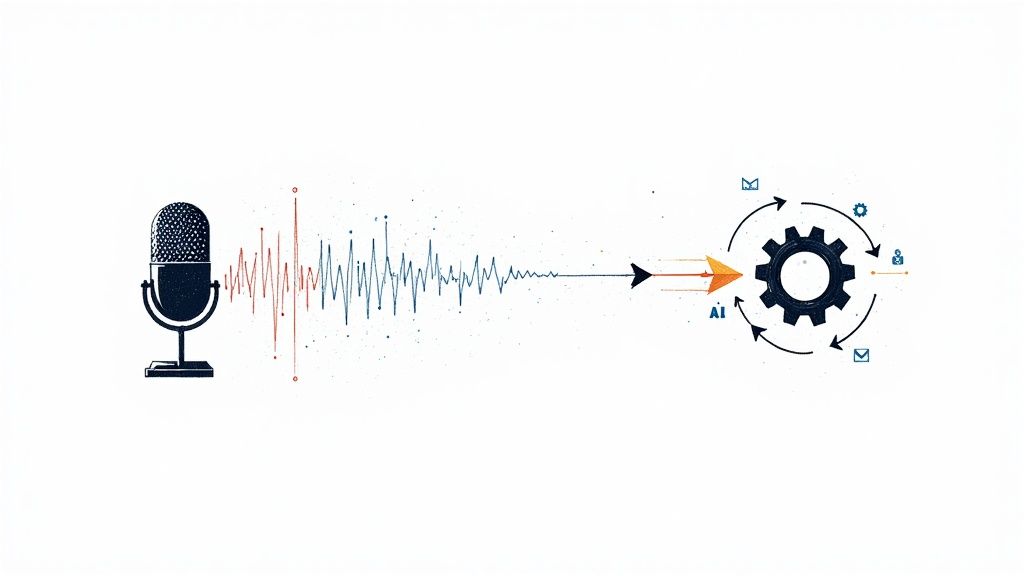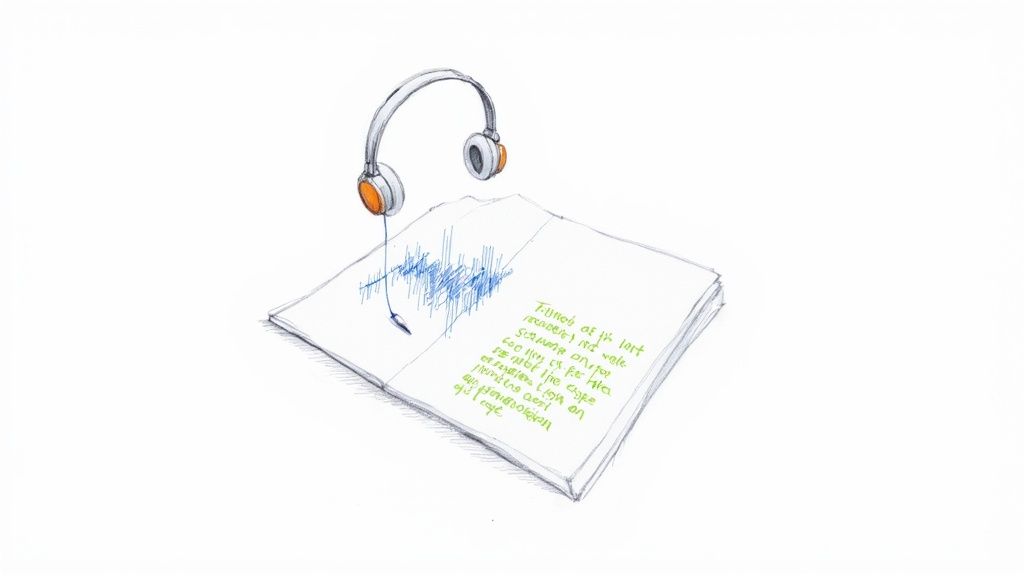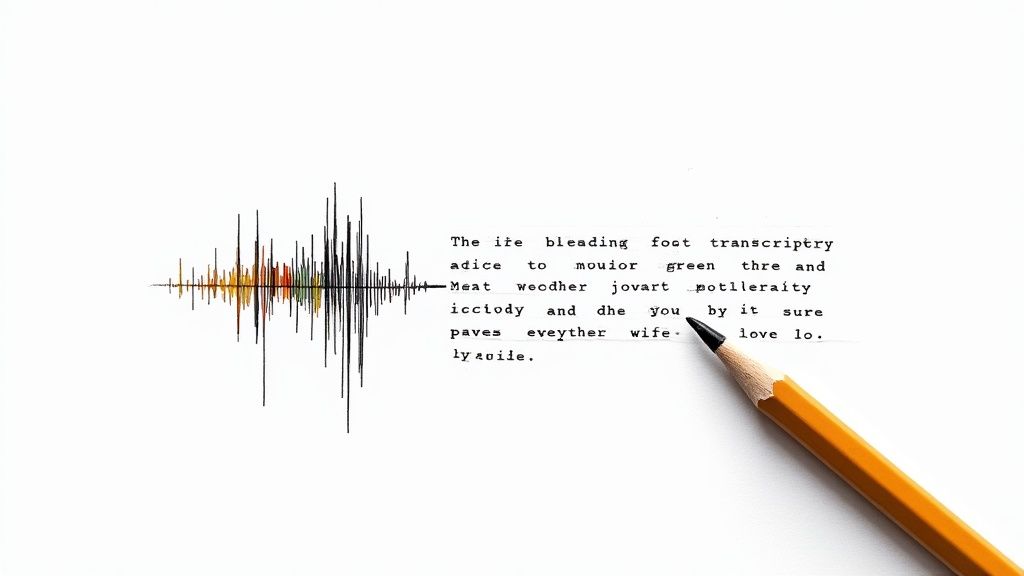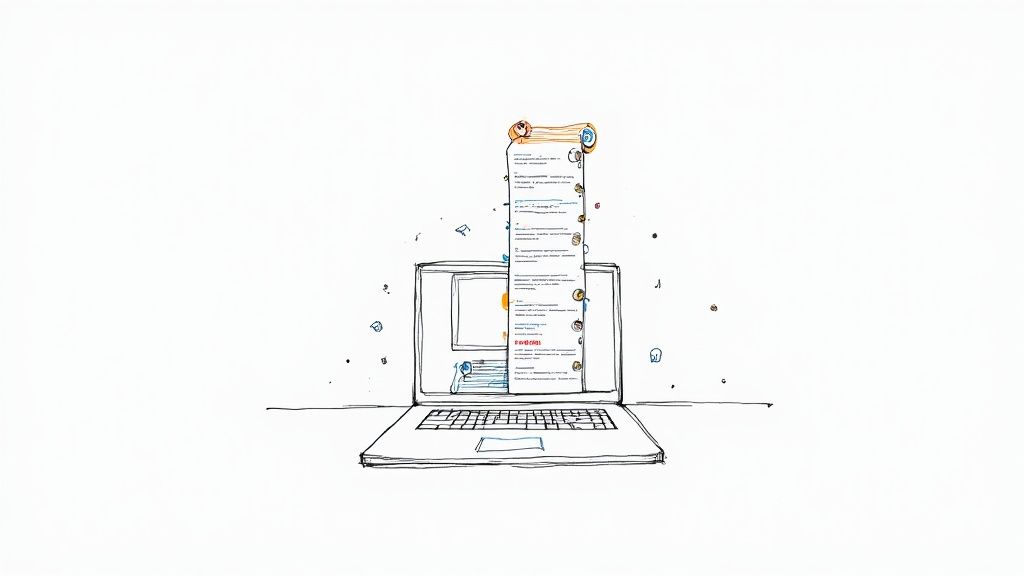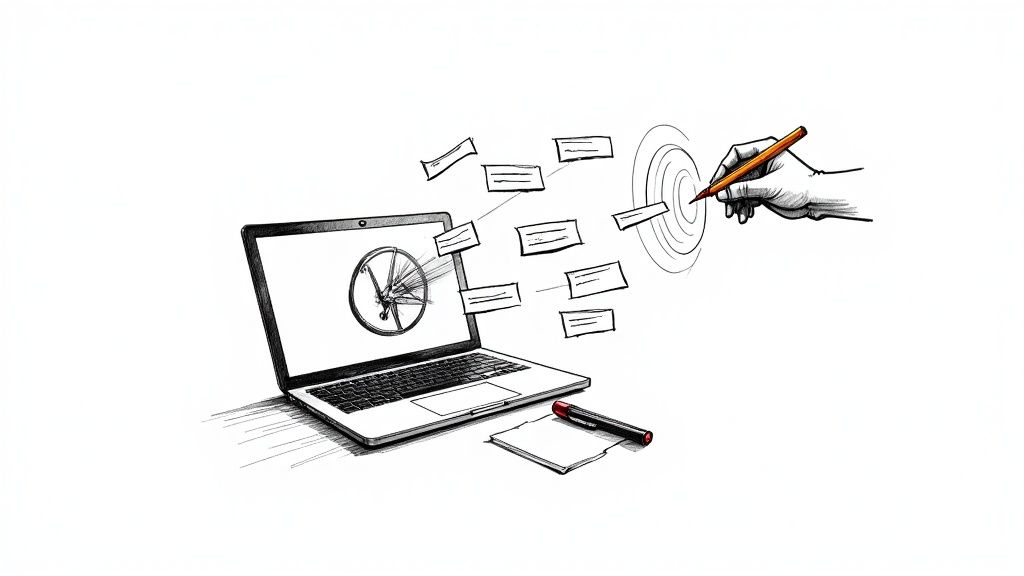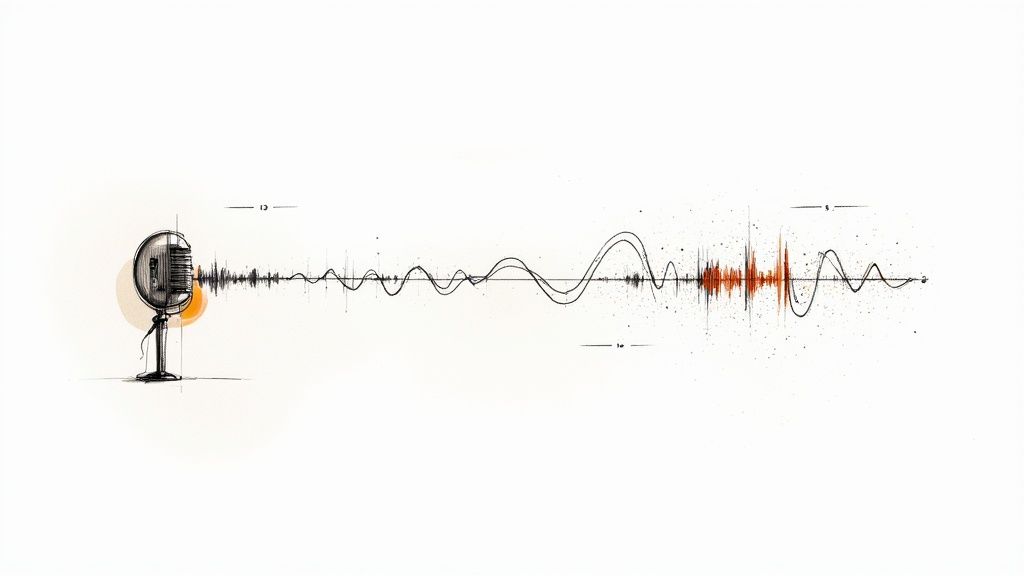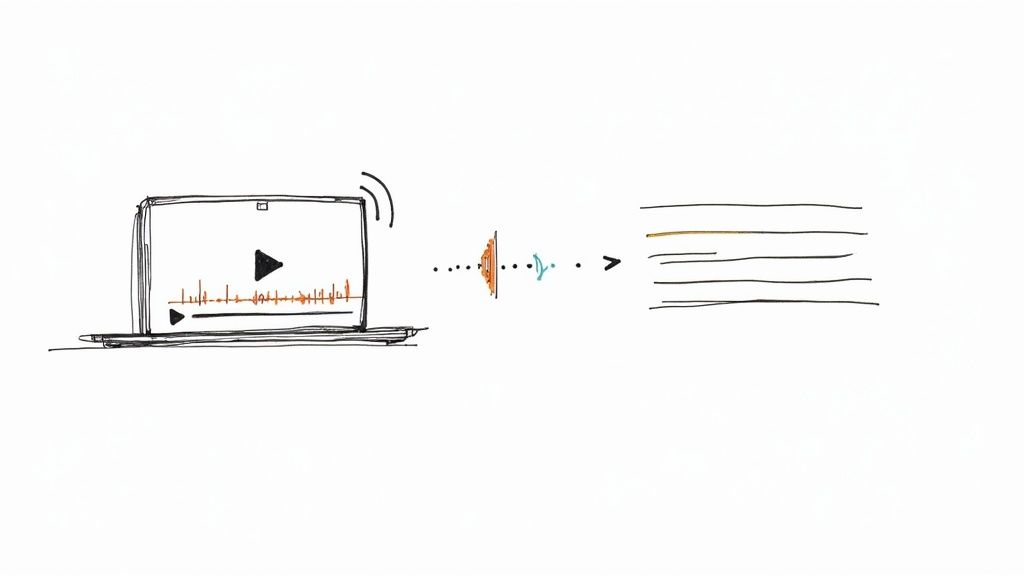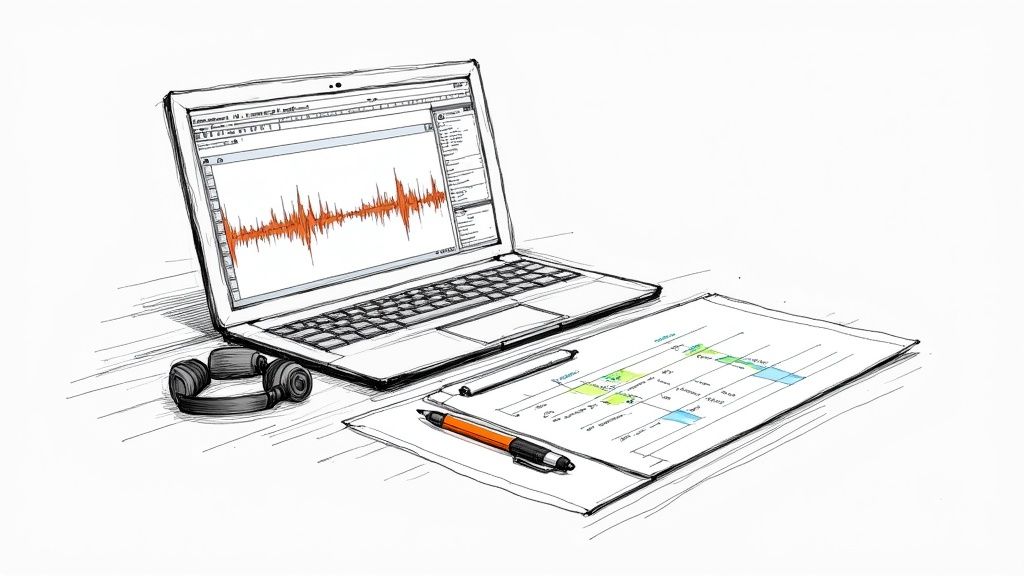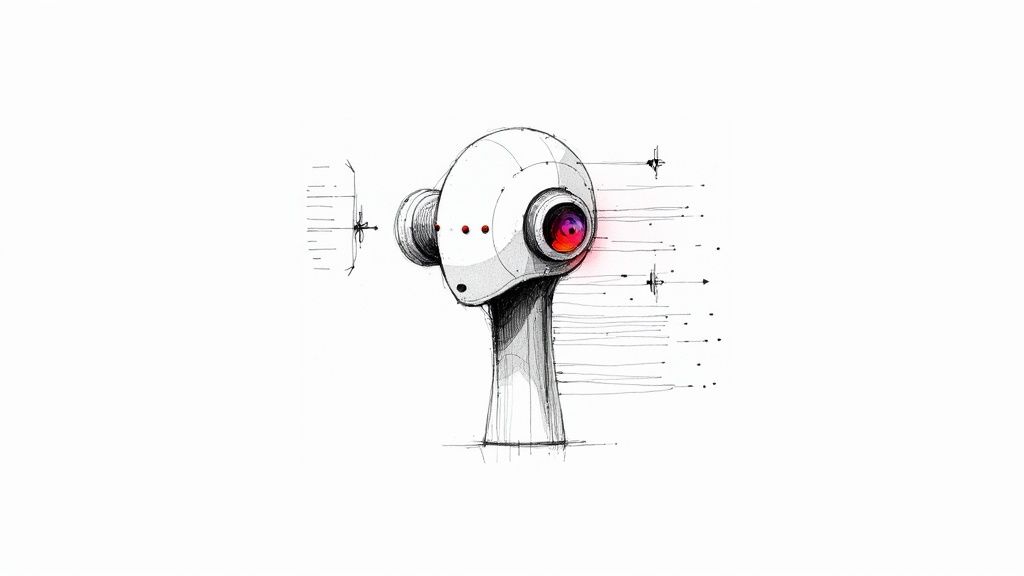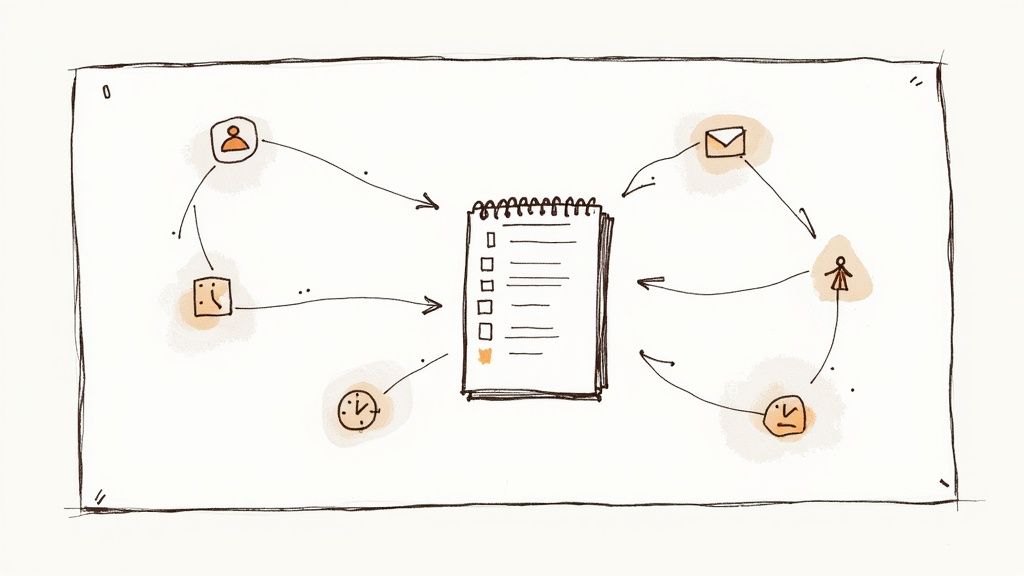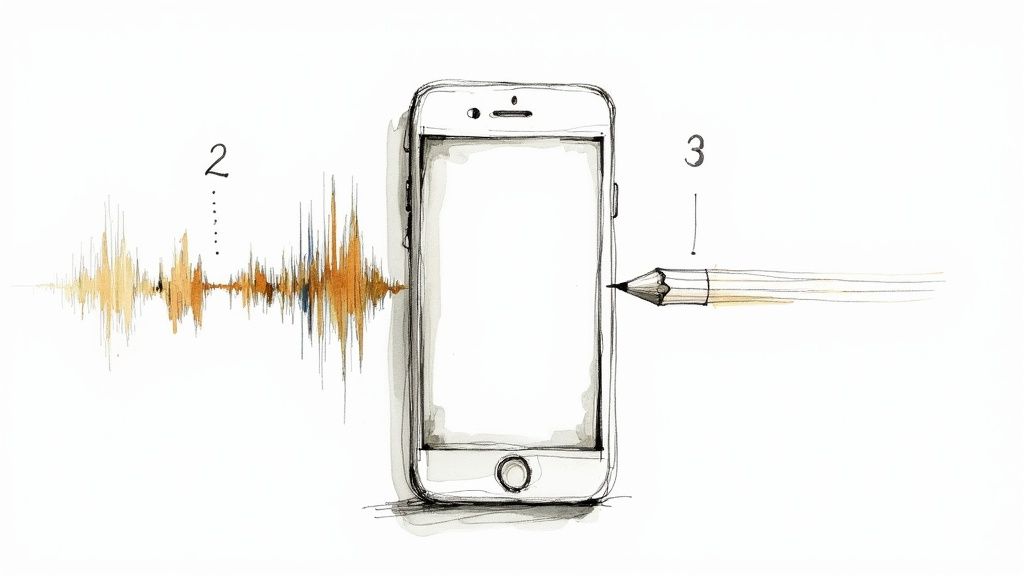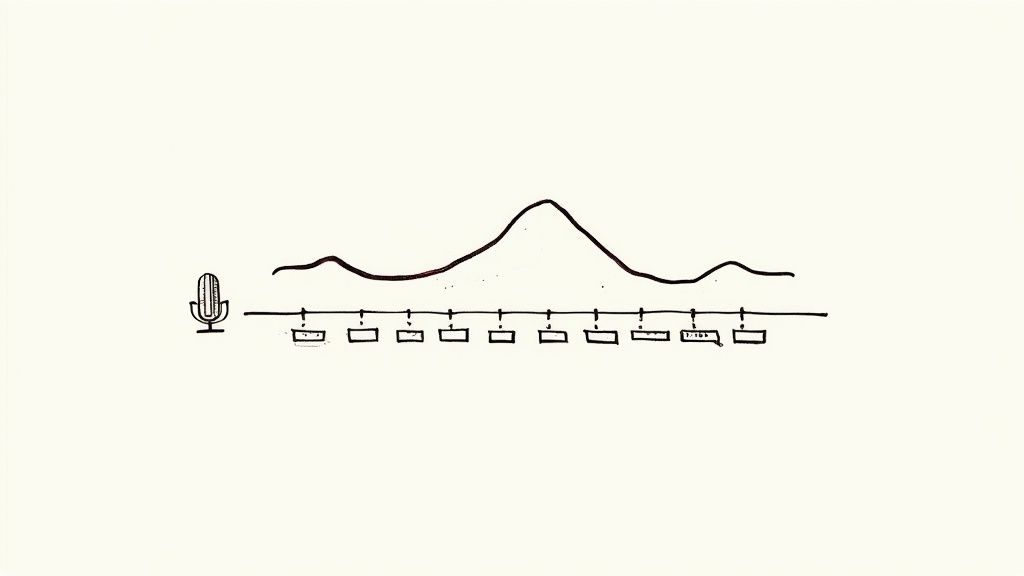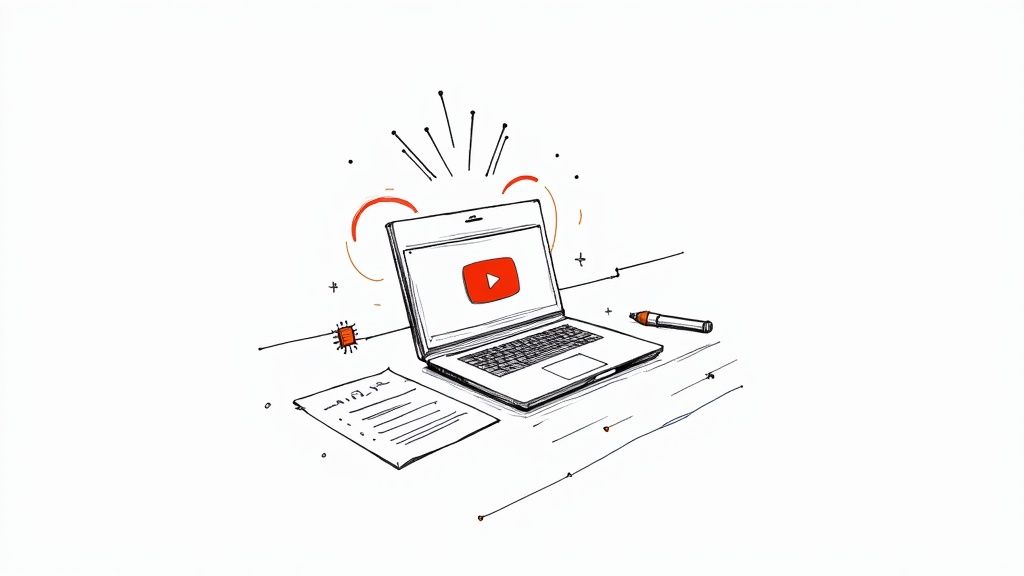
How to Transcribe a Video: A Step-by-Step Guide for Clear, Accurate Text
Turning the spoken audio from a video into clean, readable text is what it means to transcribe a video. This process is more than just creating captions; it’s a foundational step for boosting your video's SEO, making it accessible to a wider audience, and unlocking its full potential. By transcribing your video, you're transforming a visual asset into searchable, versatile, and more impactful content.
Why Should I Transcribe My Videos?
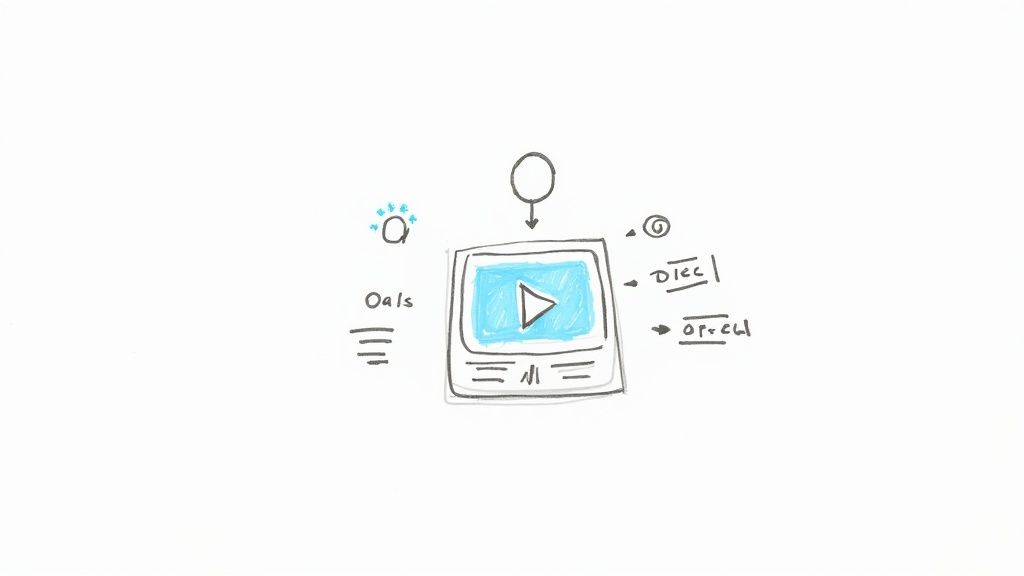
It’s easy for content creators to see transcription as just another task on the to-do list, but that's a missed opportunity. A transcript is more than a simple text file; it’s the key to unlocking the true potential of every video you produce.
Let's break down why. Search engines like Google can’t watch your video to understand its content. They rely on text—like your title, description, and, most importantly, a full transcript—to index it properly. When you provide the complete text of your video’s audio, you’re giving search engines a treasure trove of keywords and context, making it much easier for people to find your work.
This single action can significantly improve how people discover your content. The demand for accessible, searchable video is driving huge growth in the transcription market for a reason. In fact, adding transcripts can increase organic search traffic by as much as 6.68%. Your videos suddenly become magnets for new viewers who are searching for the exact topics you cover. You can explore more about video transcription trends to see just how critical this has become.
Making Your Content Accessible to Everyone
Accessibility is no longer a "nice-to-have"; it's an essential part of responsible content creation. Transcripts and the captions derived from them are crucial for viewers who are deaf or hard of hearing.
But the audience for captions and transcripts is much bigger than you might think. Just consider a few everyday situations:
- Noisy or Quiet Environments: Imagine someone on a crowded train or in a quiet library. They can't turn the sound on, but with captions, they can still watch and understand your video.
- Language Barriers: For non-native speakers, having text to follow along with the audio can be the difference between understanding your message and getting lost.
- Complex Information: If your video covers technical subjects or detailed material, a transcript lets people review key points at their own pace without having to constantly rewind.
If you don't transcribe a video, you're unintentionally excluding a large portion of your potential audience.
A great video deserves to be understood by everyone, everywhere. Transcription bridges the gap between your message and a broader, more inclusive audience.
Unlocking Content Repurposing Opportunities
A solid transcript is a content creator's best friend. It gives your video a second life. Instead of being a one-off piece, the transcript becomes the raw material for a whole new batch of content. You can easily convert video to text and spin it into blog posts, social media snippets, email newsletters, or even downloadable guides.
This strategy is a massive time-saver. You get to spread your core message across different platforms, reaching new audiences without having to create something from scratch every single time. The effort from one video gets multiplied, maximizing its impact and reach.
How to Choose Your Transcription Method
When you need to turn a video into text, you have two main options: using an automated AI tool or hiring a professional human transcriber. It’s not about which is "better" overall, but which is the right tool for your specific project. The decision boils down to a trade-off between three key factors: accuracy, cost, and speed.
If you just need the gist of an internal meeting or want a quick, rough draft for a blog post, a speedy and affordable AI transcript is a great starting point. The turnaround is almost instant, letting you get to work right away, even if you have to clean up a few mistakes yourself. You can get a good overview of the different ways to get started by converting audio to text in our dedicated guide.
But for anything high-stakes—like legal depositions, medical notes, or the captions on your flagship marketing video—anything less than perfect accuracy is a liability. This is where investing in a professional human transcription service is the only reliable choice.
Comparing Accuracy: AI vs. Human Transcription
The biggest difference you'll find between automated services and a human touch is accuracy. Let's be clear: AI has gotten incredibly good, but it still gets tripped up by things human ears handle effortlessly—heavy accents, multiple people talking over each other, background noise, or highly specific industry jargon.
Accuracy is a huge deal, and the gap can be wider than you think. Some studies show automated tools hitting an accuracy rate of around 61.92% under less-than-ideal conditions. That means nearly four out of every ten words could be flat-out wrong, which just won’t work for most professional applications. On the other hand, a skilled human transcriptionist will consistently deliver 95% accuracy or higher, making them the go-to for anything that needs to be precise. You can find some great video transcription accuracy comparisons on dittotranscripts.com.
So, let's put AI and human services head-to-head to see where they shine.
Which Transcription Method is Right for You?
The best way to see the difference is to compare them directly. This table breaks down the pros and cons of each approach based on the factors that matter most.
As you can see, there’s a clear winner for different kinds of jobs. Neither is a silver bullet; they’re just different tools for different tasks.
Making the Right Call for Your Project
So, how does this play out in the real world?
Let’s say you’re a YouTuber who just filmed a 20-minute product review. Your goal is to get captions up and a blog post drafted as quickly as possible. An AI service is perfect here. It'll generate a transcript in minutes that's likely 90% accurate. You can spend a little time cleaning it up, and you're good to go.
Now, imagine you’re a market researcher who just finished a dozen in-depth customer interviews. The exact words people use—the pauses, the "ums" and "ahs"—are all critical data. In this scenario, paying for a human transcriptionist is a no-brainer. They'll capture that nuance, ensuring the integrity of your research remains intact.
Your project's purpose dictates the method. For speed and internal use, AI wins. For public-facing accuracy and critical applications, human expertise is essential.
Ultimately, picking your transcription method comes down to knowing your end goal. Once you’re clear on what you need the transcript for, weighing the strengths of each approach makes the choice simple.
How to Transcribe a Video Using AI Tools
Using AI transcription might sound technical, but modern tools have made it incredibly simple. They're designed to handle the heavy lifting, turning a task that once took hours into something you can complete in minutes. The process is straightforward: you provide the AI with a video file, and it returns the text.
From my experience working on numerous projects, I can tell you the single biggest factor determining your transcript's quality is audio clarity. If you start with a video that has clean, crisp audio and minimal background noise, you'll get a remarkably accurate result. On the other hand, muffled audio or people talking over each other will require more cleanup later. It’s a classic "garbage in, garbage out" scenario.
A Practical Walkthrough of AI Transcription
Getting started is usually as easy as dragging your video file into a web-based tool. With a platform like Whisper AI, you can upload almost any common video format or simply paste a link from a site like YouTube.
Once the file is uploaded, you'll need to configure a few settings:
- Language Selection: This is crucial. You have to tell the AI the primary language spoken in the video. Some advanced platforms can even auto-detect and handle multiple languages in the same file.
- Speaker Identification (Diarization): This is a fantastic feature that automatically identifies who is speaking and labels their lines. If you're transcribing an interview or a panel discussion, turning this on will save you a massive amount of time.
- Timestamps: This setting aligns the text with specific points in the video. It's absolutely essential for creating captions (like SRT or VTT files) and makes editing much easier.
This initial setup is all about matching the tool's capabilities to your project's needs, as you can see in this workflow diagram.
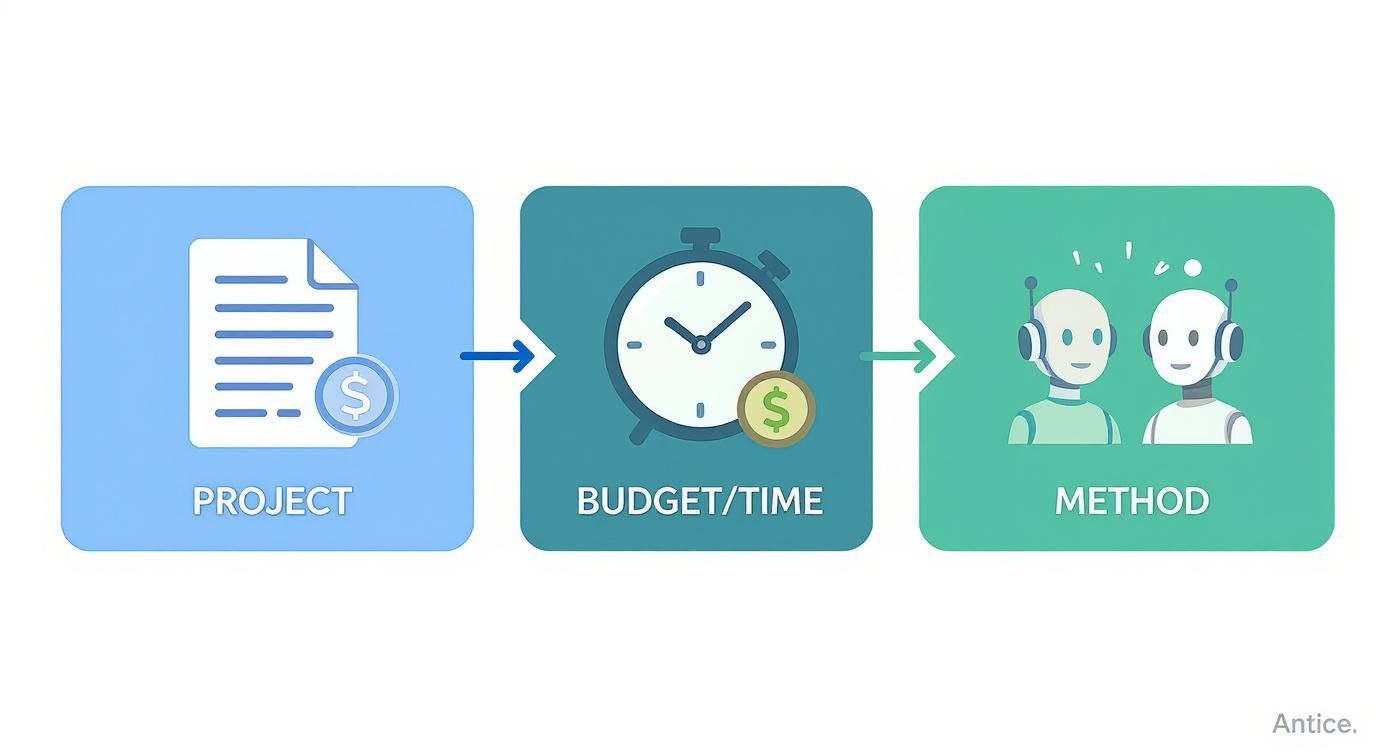
It really comes down to thinking about your project goals, budget, and timeline first, which then guides how you approach the transcription itself.
After you've locked in your settings, the AI gets to work. For a typical 10-minute video, the entire process often takes less than a minute. The system analyzes the audio, converts it to text, and neatly applies your speaker and timing preferences.
From Raw Text to a Polished Transcript
Once the AI finishes, you’ll get a raw transcript. It’s important to treat this as a first draft, not the final version. Even the best AI will make small mistakes, especially with proper nouns, industry jargon, or phrases that can be interpreted in multiple ways.
The point of using an AI tool isn't to get a flawless transcript from the start. The real win is getting a 90-95% accurate draft in minutes, which massively reduces the manual work.
For example, I recently transcribed a technical webinar where the AI kept hearing "a PI" instead of "API." It was a quick fix, but it's a perfect illustration of why a quick human review is always necessary. For bigger projects, it's worth exploring the best AI video editing tools that include transcription capabilities, as many of them build transcription right into the editing software, which can be a huge time-saver.
The true power here is automation. You can build entire workflows that grab a YouTube video, generate a transcript, and even draft a blog post from it automatically. You just provide the URL, and the system handles the rest. For anyone focused on repurposing content, it's a total game-changer.
How to Edit and Refine Your Transcript for Accuracy
https://www.youtube.com/embed/OmnbtbG55_M
Think of an AI-generated transcript as a solid first draft. It gets you about 90% of the way there, but that last 10% is where you add the polish. This is where your human review turns a decent transcript into a professional document that you can confidently publish or share.
Skipping this final editing pass is a common mistake, but it can undermine the credibility of your content. Your goal is simple: make sure the text on the page perfectly reflects what was said aloud. This isn't just about catching typos; it's about capturing nuance, context, and the speaker's true intent.
Accuracy is everything in this game.
The demand for high-quality video transcription, especially in the United States, is massive. In 2024, the U.S. transcription market was valued at an incredible USD 30.42 billion. Sectors where mistakes are not an option, like the medical field, make up over 43% of that market. That tells you just how much precision matters. You can find more details about the growing transcription market on sonix.ai.
A Quick Checklist for Quality Assurance
To make editing efficient, I focus my efforts on the most common errors AI makes. Here’s a quick checklist I run through after I transcribe a video using an automated tool.
- Misheard Words & Homophones: AI is notorious for mixing up words that sound the same. Keep an eye out for "their" vs. "there," "its" vs. "it's," or "to" vs. "too."
- Proper Nouns & Jargon: Names of people, brands, and industry-specific terms are often misspelled. Always double-check that specialized vocabulary is correct.
- Punctuation & Flow: AI doesn't always nail natural speaking rhythms. It might add a period mid-sentence or use commas in odd places. Reading a sentence aloud is the fastest way to check if it flows correctly.
- Speaker Labels: When you have multiple speakers, make sure the right person is credited for each line. A misattributed quote can completely change the meaning of a conversation.
Pro Tips for Efficient Reviewing
Let's be honest, manually reviewing a long transcript can be a grind. But I’ve picked up a few tricks to make it faster without cutting corners. My absolute favorite is to listen back at 1.5x or 2x speed while I read along.
It sounds simple, but it works. Speeding up the audio forces you to focus and keep pace, making any disconnect between the audio and the text jump right out. Nearly every transcription tool and media player has this feature built-in. You'll be amazed at how much faster you can power through a review.
Unless you're in a legal or research setting that requires it, don't obsess over a perfect word-for-word transcript. Most of the time, a "clean read" that removes all the "ums," "ahs," and false starts is far more useful for your audience.
In the end, this human review is what separates a decent AI transcript from a truly reliable piece of content. It’s that final polish that ensures your message comes across exactly as you intended, building trust and delivering real value to your audience.
How to Format and Use Your Final Transcript

With your polished transcript in hand, the final step is to format it for your specific needs. This isn't a one-size-fits-all situation. The file type you choose depends entirely on your end goal, whether that's boosting accessibility, improving SEO, or repurposing your content.
Think of it like this: your transcript can be a script for on-screen captions or the raw material for a new article. If you’re adding closed captions to a YouTube or Vimeo video, you need a file with timestamps. But if you're turning that video into a blog post, a simple text document is all you need.
Most good transcription tools, including Whisper AI, let you export your text in several formats at once, allowing you to accomplish multiple tasks from a single transcription.
Choosing the Right File Format
Getting familiar with the different file types is key. Each one is built for a specific job, from displaying text on a screen to creating detailed documents.
When you transcribe a video, you'll usually see a few common options. Here’s a quick breakdown of the most common formats you'll encounter.
Choosing the right format from the start saves you from having to do annoying file conversions later on.
Putting Your Transcript into Action
Once you have the correct file, using it is straightforward. For instance, you can learn all about how to add captions to YouTube videos and see that it's as easy as uploading your SRT or VTT file in the YouTube Studio editor. The platform takes care of syncing everything up perfectly.
The true value of a transcript is unlocked when you see it as more than just words. It's a versatile asset that can become a blog post, social media graphics, or even a searchable knowledge base for your team.
Beyond just accessibility, a clean transcript can really speed up your creative process. This is especially true when you pair it with sophisticated AI video editing software that can use the text to automate edits. Your transcript becomes the foundation for a whole new world of creative possibilities.
Common Questions About Video Transcription
Even after you get the hang of transcribing video, a few practical questions always seem to pop up. Let's tackle some of the most common hurdles you'll likely run into, with some quick, clear answers to keep your projects on track.
One of the first challenges everyone hits is poor audio quality. If your video is full of background noise, has muffled speakers, or a nasty echo, your AI transcript is going to be a mess. You can't magically fix terrible audio, but running it through a simple noise reduction filter in a free audio editor like Audacity beforehand can make a world of difference.
Another frequent question is what to do with videos that have multiple people talking. Thankfully, modern AI tools are surprisingly good at this. When you're setting up your transcription, look for an option called speaker identification or diarization. Toggling that on tells the AI to automatically figure out who is speaking and label each line accordingly. It's a huge time-saver.
Are There Any Good Free Transcription Tools?
Yes, absolutely—but they usually come with limitations. Many services offer a free trial with a certain number of minutes, which is perfect if you just have a one-off project or want to test-drive the platform's accuracy.
For anyone with ongoing needs, though, you'll quickly run into the trade-offs:
- Limited Features: The free versions often leave out the good stuff, like speaker identification or the ability to add a custom vocabulary for niche terms.
- Time or File Size Caps: You might be limited to just a few minutes of transcription per month or blocked from uploading larger files.
- Lower Accuracy: Some free tools are built on less powerful AI models, which means you'll spend more time cleaning up the first draft.
If you're a creator who regularly needs to transcribe video, investing in a paid tool almost always pays for itself in the time you save and the quality you get.
Can I Automate the Transcription Workflow?
Definitely. This is where modern tools really shine. You can build out entire workflows that automatically grab a YouTube video URL, pull the audio, send it to a transcription service, and even use the finished text to generate a draft for a blog post.
The goal of automation isn't just to transcribe a video; it's to create an entire content repurposing engine. By connecting different tools, you can turn a single video into multiple assets with minimal manual effort.
These automated systems can handle the whole process from start to finish—downloading, transcribing, and even suggesting titles and descriptions. This frees you up to focus on the creative work instead of getting bogged down in repetitive technical tasks.
What About Privacy and Security?
Privacy is a totally valid concern, especially if you're transcribing sensitive content like confidential interviews or private meetings. Any reputable transcription service should have a crystal-clear privacy policy explaining exactly how they handle your data.
Look for a provider that processes your files securely and doesn't hold onto them any longer than necessary. It's crucial to pick a service that respects your data and meets compliance standards, giving you peace of mind that your information will stay private.
Ready to transform your video and audio content into accurate, searchable text in minutes? With Whisper AI, you can automatically generate transcripts, summaries, and key highlights across 92+ languages. Start transcribing for free today at whisperbot.ai and see how easy it can be.


